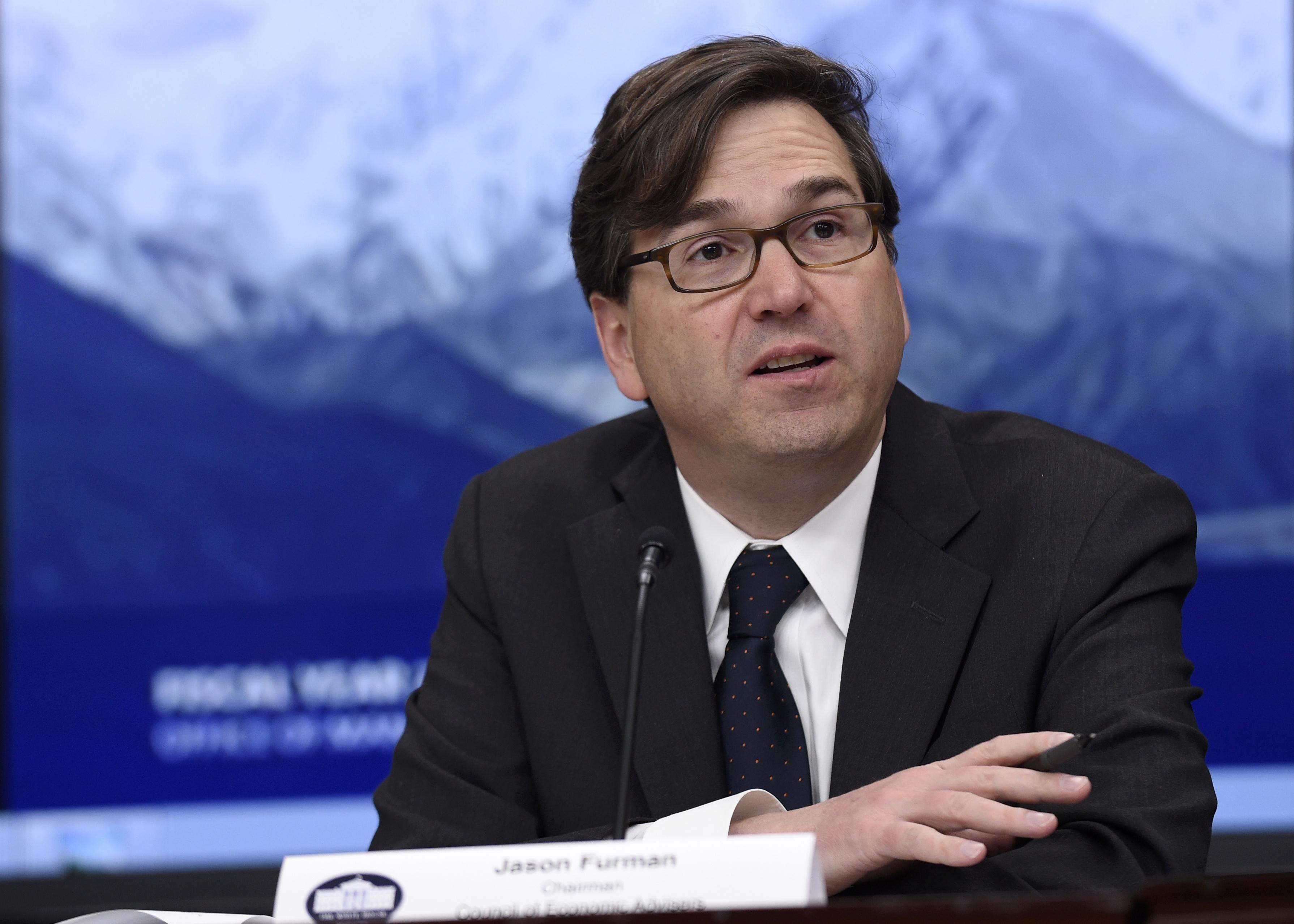
WASHINGTON (AP) — Two months of sharply rising prices have raised concerns that record-high government financial aid and the Federal Reserve’s ultra-low interest rate policies — when the economy is already surging — have elevated the risk of accelerating inflation.
In May, consumer prices rose 5% from a year earlier, the largest such year-over-year jump since 2008.
Many economists see the recent spike as temporary. Others say they worry that higher consumer prices will persist. Jason Furman, a Harvard professor who was President Barack Obama’s top economic adviser, thinks the reality is more complicated. He does, however, lean toward the higher-inflation-will-persist camp.
Furman notes that while most economists expect inflation to slow from its current quickened pace, not all think it will fall back to the Fed’s preferred level of 2% a year.
The Associated Press spoke recently with Furman about why higher inflation might prove only temporary, why it might persist and whether a little more inflation is all that bad.
The interview was edited for length and clarity.
___
Q. WHAT’S DRIVING INFLATION UP, AND DO YOU THINK IT WILL PERSIST?
A. There’s been a lot of very temporary inflation from a set of quirks related to the economy’s reopening. For example, used car prices have absolutely soared, and other prices are getting back to where they were pre-pandemic. I don’t think anyone thinks the recent rate of price increase is going to continue. The question is, how much does it slow down? Does it slow down all the way back to the 2% increase every year we used to see? Or does it slow down less than that, and we’re left with something more like a 3% increase every year?
___
Q. HOW BAD WOULD 3% INFLATION BE? IS IT SOMETHING WE REALLY NEED TO AVOID?
A. I don’t actually think 3% inflation would be terrible, but it depends. If policymakers tried to lower inflation from 3% to 2%, (by raising interest rates), that could be pretty painful. If wages don’t keep up with prices, that would also be troubling. But if we want to operate the economy, year in and year out, at a higher inflation rate going forward, I don’t see that as a problem. But I do think it’s important to make policy based on the most realistic and accurate expectations for what’s happening in the future.
___
Q. BEYOND THE ECONOMY’S REOPENING, WHAT MIGHT DRIVE A MORE SUSTAINED BOUT OF INFLATION?
A. I think the four reasons why you might worry that inflation is going to be more persistent are, No. 1, there are some shoes that haven’t dropped yet. The biggest of them being the price of shelter — that’s rent. And then it’s something called owner’s equivalent rent, which is what it costs a homeowner to live in their home. (Both rents and home prices have risen sharply.)
Second factor is some prices are sticky. That means they don’t adjust really quickly and right away. A lot of prices change once a year, and you’re going to see more of those price changes over time. Wages also tend to be sticky. A lot of employers might in September decide on new wages for January.
The third factor is that it’s likely that demand continues to exceed supply through the rest of the year. People have a lot of money. They’re spending that money, but not everyone’s back to work, which means we can’t make everything that people want to buy.
And finally, and most speculatively, expectations for inflation play a big role in the dynamics of inflation. Could expectations change? Could they become unanchored if people start to expect more inflation? It would be self-fulfilling.
___
Q. HOW DOES THE CURRENT SITUATION COMPARE WITH THE SPIRALING INFLATION OF THE 1970s?
A. There’s no danger of a repeat of the experience like the 1970s. The Fed learned that lesson. They’ll never let inflation get to 10%. The 1960s is the model for what we’re going through now. Inflation crept up from about 1.5% to about 5%.
One of the troubling things in the 1960s was that wages didn’t keep up with prices, and so people saw their purchasing power, their real wages fall. I’m not saying that’s what’s going to happen now, but that is the scenario to be worried about.
___
Q. DO YOU THINK THE FED HAS PROPERLY ASSESSED THE RISKS?
A. They shifted policy in the right direction at their latest meeting (on June 15-16). But I think they’re going to surprise themselves that they’re going to end up with a very strong recovery in jobs, that we’re going to end up with more inflation than we expect. And so they’re going to raise rates sooner than they think they’re going to.
___
Q. WOULD THAT SLOW THE ECONOMY OR POTENTIALLY CAUSE A RECESSION?
A. There’s two scenarios for the Fed. The most likely one is that our unemployment rate is quite low in 2022. Inflation is running above trend. And so the choice is very easy. They’ve achieved roughly their maximum employment mandate. They raise rates. The bad scenario for the Fed would be the unemployment rate remains elevated and inflation is running at 3% and then their dual mandate will be pulling them in different directions. And I’m not sure how they would resolve that.
The remainder of this article is available in its entirety at CBN

